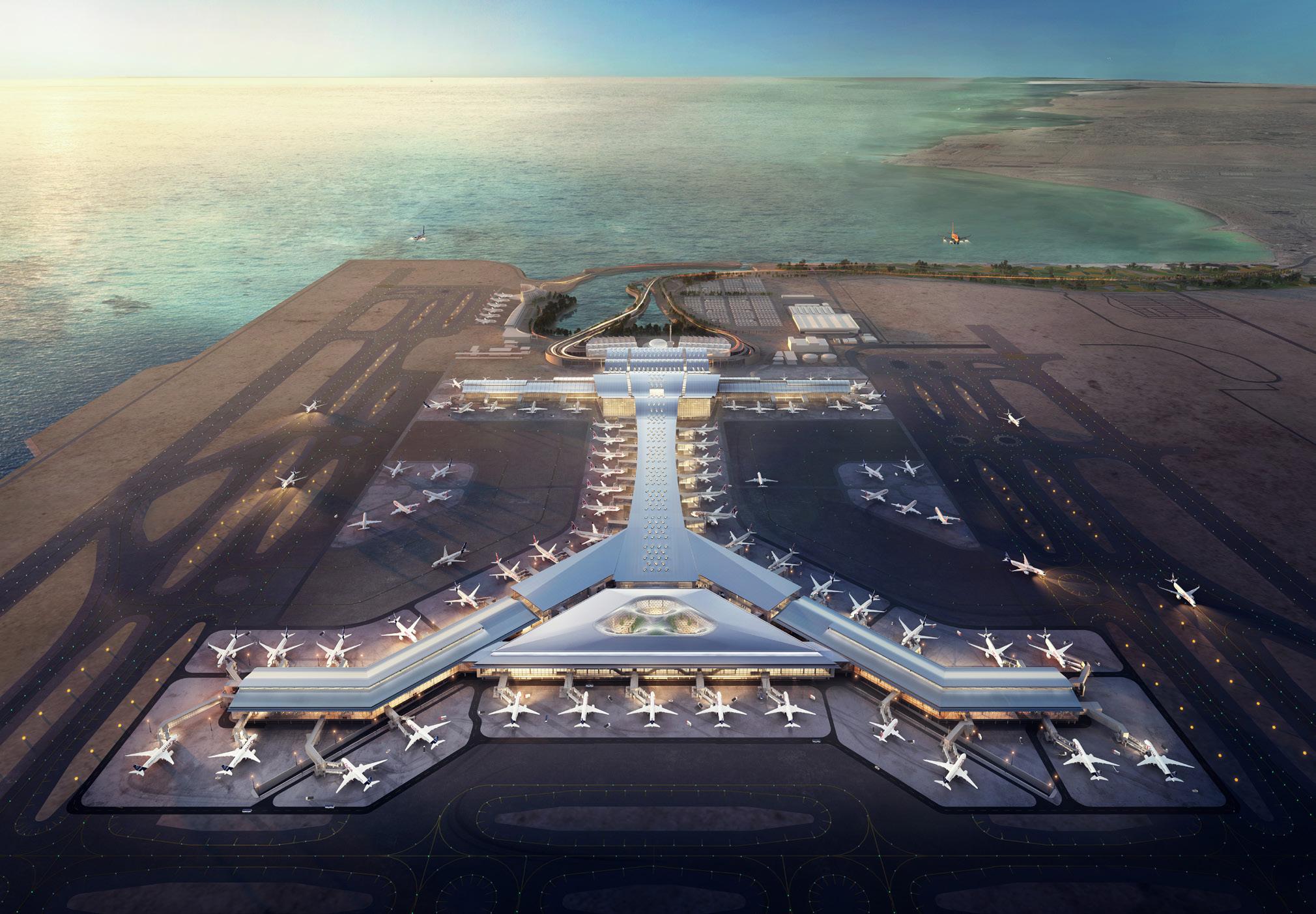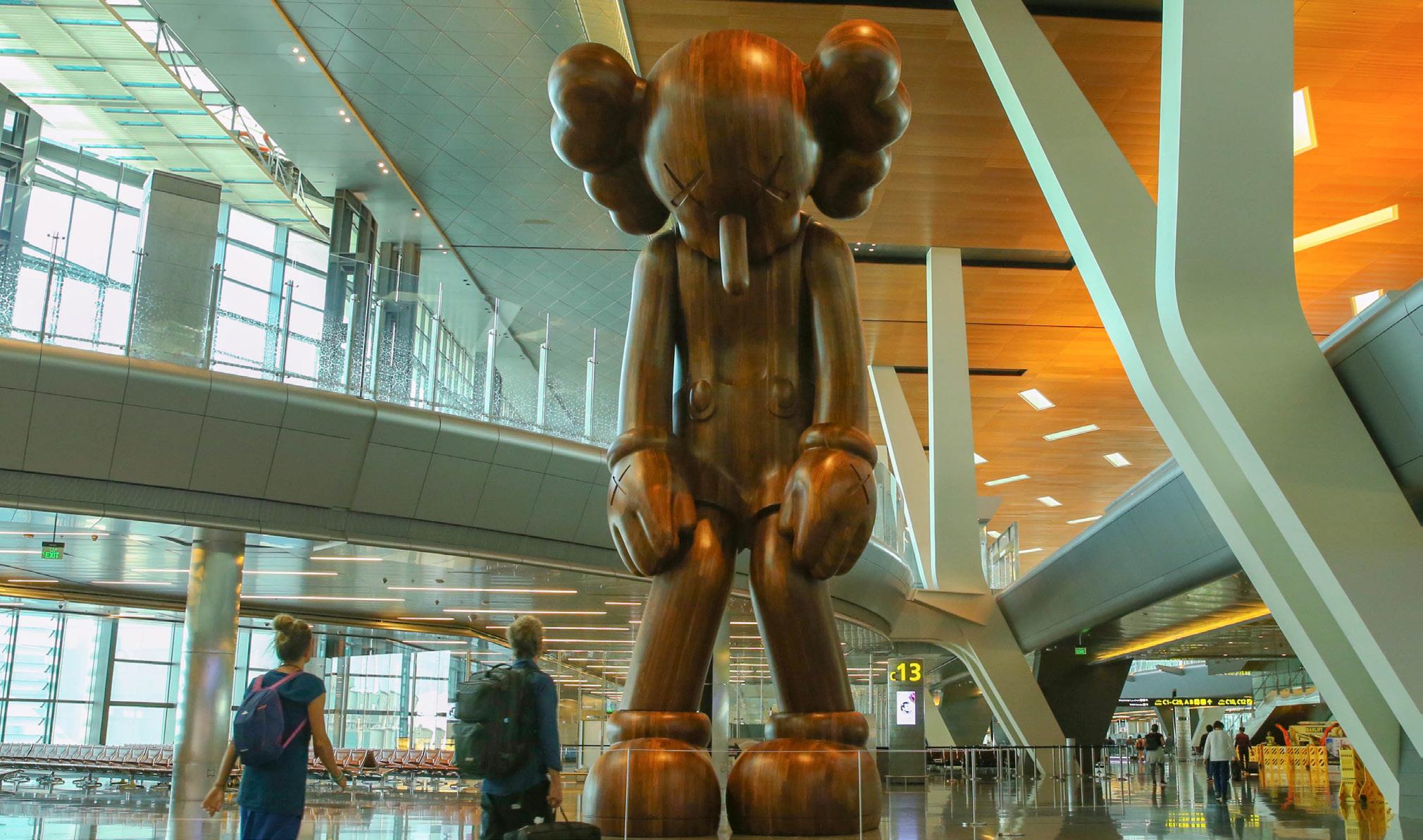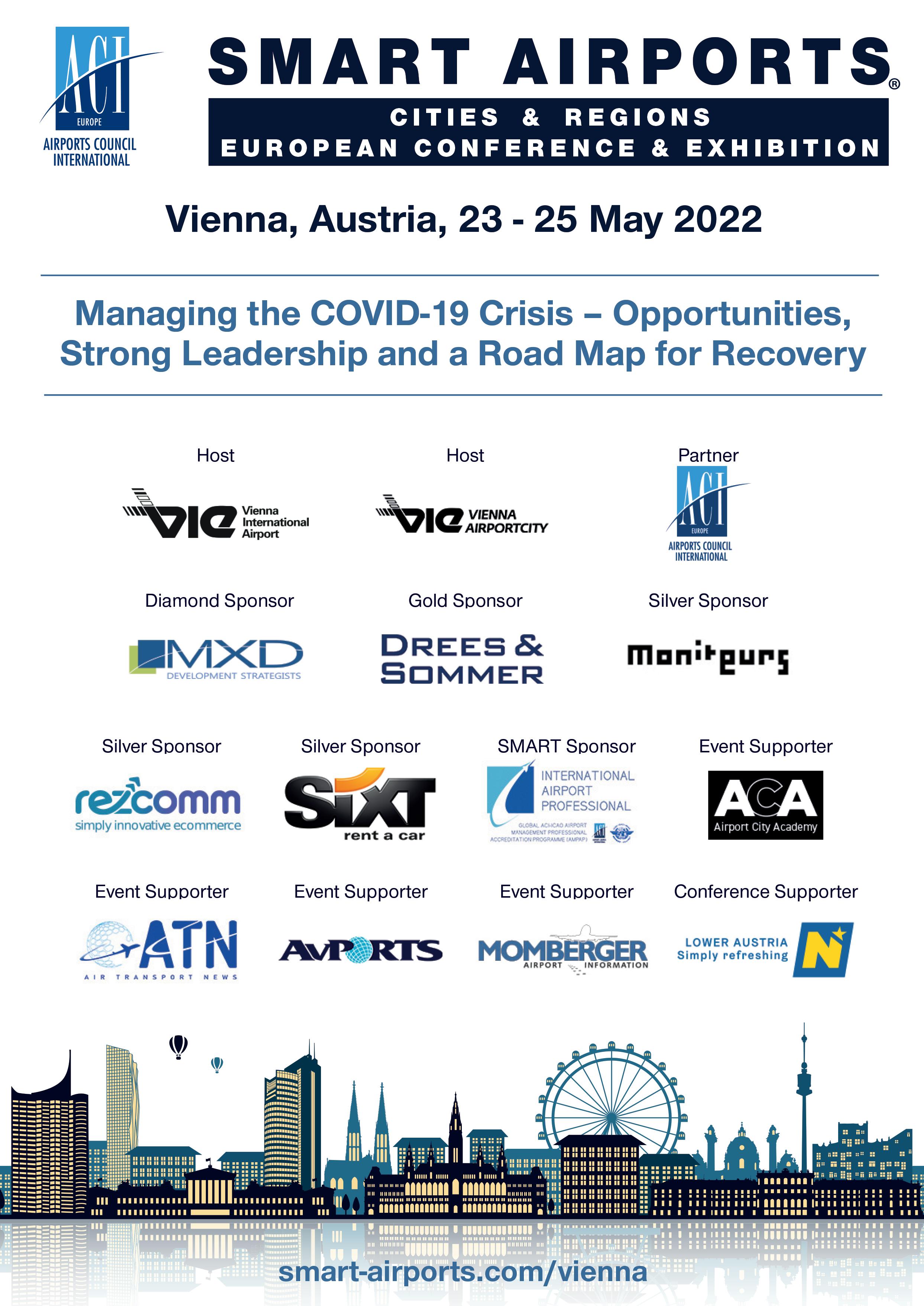
11 minute read
GOALS GALORE
Hamad International Airport’s chief operating officer, Badr Mohammed Al Meer, tells Joe Bates more about the latest traffic trends, IT innovation and expansion plans of Qatar’s gateway to the world.
DOHA’S ANNUAL THROUGHPUT SOARED FROM 12.3 MILLION PASSENGERS IN 2008 TO 38.7 MILLION IN 2019 MAKING IT ONE OF THE WORLD’S FASTEST GROWING AIRPORTS. WHAT DROVE THIS EXTRAORDINARY GROWTH?
Advertisement
The remarkable transformation of Qatar’s economy and the development of its environment over the past few decades has proved the catalyst for growth. Indeed, Hamad International Airport was designed to support and sustain Qatar’s rapid development as a nation. This means that it must be capable of handling an exponential increase in Qatar’s capacity for the international movement of people, goods, capital, knowledge and technology. It is a vital element of Qatar’s National Vision 2030, which sets out the roadmap for a unique national transition from reliance on petrochemical revenues to a diverse, knowledge-based economy.
Tourism has also played – and continues to play – a major role in accelerating Qatar’s growth and has been identified as one of five priority sectors integral to diversifying Qatar’s economy. In fact the growth in international tourism continues to outperform the global economy. According to UNWTO [the United Nations World Tourism Organization], global tourism reached an all-time high before the COVID-19 pandemic, with 1.5 billion international tourist arrivals in 2019. This marked a 4% increase on the previous year, confirming tourism as a leading and resilient economic sector. I mention this as the Middle East emerged as the fastest-growing region for international tourism arrivals in 2019, growing at almost double the global average (+8%).
DOES THE AIRPORT’S GROWTH TRAJECTORY OVER THE LAST DECADE EXPLAIN WHY THE AIRPORT IS IN MIDST OF EXPANDING ITS FACILITIES?
Yes, it does. The ongoing expansion of Hamad International Airport will increase its capacity to more than 60 million passengers per annum, and is ultimately an investment in Qatar’s future. It will cater to Qatar’s thriving economic diversification and growth and enable the airport to accommodate the success and growth of national flag carrier, Qatar Airways.

Although the last few years have been very much about adapting to meet the challenges posed by the pandemic, which for us meant being at the forefront of airport health and safety innovations, we never lost sight of our ambitious and long-term goals for the airport. As a result we have continued apace with our expansion programme for HIA [Hamad International Airport] and our pre-existing business continuity plan ensured that it would not have to be delayed or put on hold because of the COVID pandemic.
CAN YOU TELL US A LITTLE MORE ABOUT THE MOST HIGH-PROFILE INFRASTRUCTURE PROJECTS PLANNED FOR THE NEXT PHASE OF THE AIRPORT’S DEVELOPMENT?
Our philosopy is to always loook to adapt and enhance our facilities to meet ever evolving passenger expectations. We know, for example, that passengers want to start their journey before they reach their destination and we cater to that by providing them with unique experiences throughout the terminal that are often beyond regular expectations.
This was taken into consideration in HIA’s ongoing expansion project, which will enhance the multidimensional offerings of the five-star airport by integrating additional world-class art to its existing collection with a refreshing environment of lush greenery and contemporary retail and dining concepts among other leisure attractions and facilities under one expansive terminal. metre indoor tropical garden and 268 square metre water feature. The tropical garden will have trees sourced from sustainable forests around the world and the new design will allow trees and plants to acclimatise to the internal conditions and grow throughout the life of the airport. This will provide passengers with an opportunity to be part of a didactic experience to showcase the importance of environmental conservation.
HIA’s expansion will also see the construction of a new cargo terminal that will increase its handling capacity to an estimated five million tonnes of freight per year. The expansion will also include the addition of 9,000 square metre Al Mourjan lounge, to complement the existing Al Mourjan lounge, which will have its own spas, gym, restaurants and business centres.
In addition, HIA and Qatar Duty Free are continuing to develop pioneering partnerships with leading luxury brands to bring travellers the world’s best in airport retail, leisure, and attractions. Qatar Duty Free is not only working on renovating its main duty-free store but is also preparing to unveil new retail experiences at HIA in the coming years.
Phase A of the ongoing infrastructure development programme will raise the airport’s capacity to 58 million passengers per annum ahead of the 2022 FIFA World Cup. Phase B, which will commence after the end-of-year tournament, will effectively equip the airport to handle more than 60mppa.

WILL SENSE OF PLACE PLAY A SIGNIFICANT ROLE WHEN IT COMES TO THE NEW FACILITIES?
I believe that HIA already showcases the hallmarks of Qatar’s warm and welcoming hospitality and modern infrastructure, giving travellers a glimpse of what Qatar has to offer, and the new facilities will build on this.
The airport represents Qatar’s Arabian hospitality, where comfort and wellbeing are a priority. The airport’s architectural elements reflect Qatar’s own modern architecture, with its futuristic skyscrapers and incredible structures designed by world-renowned architects like I.M. Pei and Jean Nouvel lining up Qatar’s skyline. HIA also gives travellers a taste of Qatar’s world-class dining and retail experiences, the country’s fine art collection, luxurious relaxation facilities and Qatar’s public art programme which is prominently featured across the terminal.
Much like the country’s offerings, passengers at HIA are spoilt for choice with some of the world’s best contemporary offerings and innovative facilities, which are curated at the airport.
IS THE SUSTAINABLE DEVELOPMENT OF YOUR FACILITIES HIGH ON THE AGENDA?
Hamad doesn’t only strive to be the best airport in the world, but also the best airport for the world. HIA addresses its impact on the environment by taking steps towards minimising the consumption of natural resources, controlling its carbon emissions, and managing waste safely.
As one of the world’s leading airports, we are conscious of the need to be seen to be leading the industry towards a more sustainable future. This determination to pioneer change has ensured that HIA has operated in an environmental sustainable way since opening in 2014 and recently showcased its commitent to the cause by pledging to improve carbon efficiency per traffic unit to 30% by 2030.
It should be noted that the airport has observed a steady downward trend in overall CO2 emissions and has been certified at Level 3 Optimisation status in ACI’s Airport Carbon Accreditation programme.
Upon completion of Phase A of the expansion programme, HIA is expected to become the first airport in the MENA region to achieve a 4-star Global Sustainability Assessment System (GSAS) rating, a performance-based system for rating green buildings and infrastructure.
The expanded terminal will also be a LEED Silver-certified building with innovative energy efficiency measures incorporated throughout the entire premises.
HIA is working with its supply chain on all the expansion projects to ensure that the equipment procured is contemporary and efficient for lifetime operational benefits.
In addition, HIA’s Oryx Airport Hotel has also successfully replaced all of its plastic water bottles with eco-friendly water containers as one of the many green initiatives implemented over the past two years in its efforts to achieve 100% eco-friendly operations.
I also beleve that Hamad operates one of the region’s most effective water management systems as most water used at the airport is directed to our dedicated wastewater treatment plant, which returns the treated water for irrigating the airport’s landscape features. In 2018, the plant was successful in recovering 93% of wastewater.


Nevetheless, we continually review its systems to identify areas of improvement for long-term efficiency and sustainability.
HOW SERIOUSLY DOES HAMAD INTERNATIONAL AIRPORT TAKE CUSTOMER SERVICE?
HIA puts passengers at the heart of everything by implementing a strategy that prioritises a passengercentric approach to its mission and vision. Whether it is in our everyday airport operations, expansion projects or preparing for the FIFA World Cup finals in Qatar later this year, we always consider how the experience benefits the passenger.
This approach means that whenever developing or launching new services or facilities, we always look at how they will enhance the airport experience. This is one of the reasons why at our airport Wi-Fi, quiet rooms, art exhibitions, activity nodes, play areas and family relaxation facilities are all complimentary to our passengers.
I am proud to say that HIA’s customer service team is made up of a group of talented, passionate and caring individuals from around the world who are focused on providing exceptional customer service while aligning with the company’s vision.
The team has identified four key pledges that they follow to ensure the delivery of top quality customer service to passengers. The pledges are to ‘Deliver Quality’, ‘Work Together’, ‘Take Charge’ and ‘Genuinely Care’. They are accountable for getting things done and, most importantly, are empathetic to customers’ needs. These goals are ingrained into every member of the customer service team, and I believe that this approach has had a real impact on the wider organisation, with HIA regularly being recognised for having the ‘Best Airport Staff’ in the Middle East and the world in annual industry awards.
WHAT ARE YOUR PROJECTIONS FOR PASSENGER AND CARGO VOLUMES FOR 2022 AND WHEN DO YOU EXPECT YOUR TRAFFIC LEVELS TO RETURN TO PRE-COVID LEVELS?
Based on the surge in volumes we witnessed in 2021 compared to 2020, we are optimistic that passenger numbers are on the way to returning to pre-COVID levels. In 2021, we witnessed a 41.37% increase in the number of passengers at HIA compared to 2020, with a total of 17.7 million passengers passing through our facilities. Air cargo volumes also increased by 20.71% to 2.58 million tonnes, helped by the introduction of six new cargo destinations. The number of aircraft movements handled at Hamad International Airport also grew by 28.12% to 169,909 take-off and landings.
DO YOU THINK THAT THE UPCOMING FOOTBALL WORLD CUP FINALS WILL HAVE A BIG IMPACT ON YOUR 2022 YEAR-END PASSENGER FIGURES AND IN RAISING THE PROFILE OF QATAR?
The FIFA World Cup will benefit Qatar and the entire region by allowing us to showcase its wonders and capabilities to the world.
We expect to welcome 1.8 million visitors during the tournament, when operating company MATAR will make history by becoming the first airport operator to handle all air travellers to a football World Cup. HIA is working hand-in-hand with the Supreme Committee for Delivery

and Legacy to process up to 88,000 arrivals and 103,000 departures per day during the World Cup. Therefore, the world cup will certainly have an impact on our annual passenger figures.
The tournament will show the world the passion that exists for football in this region and the amazing fans and footballing talent the Middle East and Arab world boasts. Hamad International Airport, along with the whole country, is ready to create memorable experiences for football fans across the globe.
WHO ARE YOUR BIGGEST AIRLINES IN TERMS OF MARKET SHARE?
National flag carrier, Qatar Airways, is the biggest airline operator at HIA by quite some way. The next biggest are probably Indian carriers Indigo and Air India Express, which provide connecting services to a number of popular Indian destinations. Next come a handful of Middle Eastern carriers.
DOES THE IMPACT OF THE GLOBAL PANDEMIC CONTINUE TO AFFECT YOUR ROUTE NETWORK?
Many of our most popular routes are in a state of flux at the moment as air travel remains dependent on COVID-19 travel policies and restrictions around the world. Having said that, we actually welcomed seven new passenger routes last year – Abidjan (ABJ), Harare (HRE), Lusaka (LUN), Moscow (SVO), Odessa (ODS), Olongapo (SFS) and Seattle (SEA) – and one new airline partner, RwandAir.
For the record, Dhaka, Male, Dubai, Kathmandu and London were among the busiest departing destinations from Doha in 2021. The new destinations and airline means that HIA is currently served by 35 carriers that between them operate flights to 160 destinations in 81 countries and territories around the world.
WHAT ARE YOUR AMBITIONS AND TARGETS FOR HIA THIS YEAR AND OVER THE NEXT FIVE TO 10 YEARS?
Our focus for 2022 and beyond is to maintain our leading position globally and provide a new standard for airports around the world. This will mean keeping the ongoing multi-phased expansion of Hamad International Airport on track as it will raise our capacity, enhance the customer experience and open doors to more airlines partners that want to offer flights to and from Qatar, increasing Qatar’s global connectivity and network of destinations.
In terms of improving the airport experience, we will continue to provide passengers with a memorable travel experience through activations, events, art, culture, retail, and F&B experiences throughout the terminal. We are actively working on further developing the retail sector by bringing more world-renowned brands and exclusive products to the airport in partnership with Qatar Duty Free. New retail and dining concepts set be unveiled in the coming years will include an alfresco experience for passengers.
We are, of course, also greatly looking forward to hosting the FIFA World Cup finals at the end of year where we are very aware that HIA will almost certainly provide visitors with their first and last impressions of Qatar. As we gear up for the tournament, our main priority is to reduce the wait times at every touchpoint across HIA through the use of cutting-edge technology and automation to ensure a seamless and convenient passenger experience without jeopardising security.










